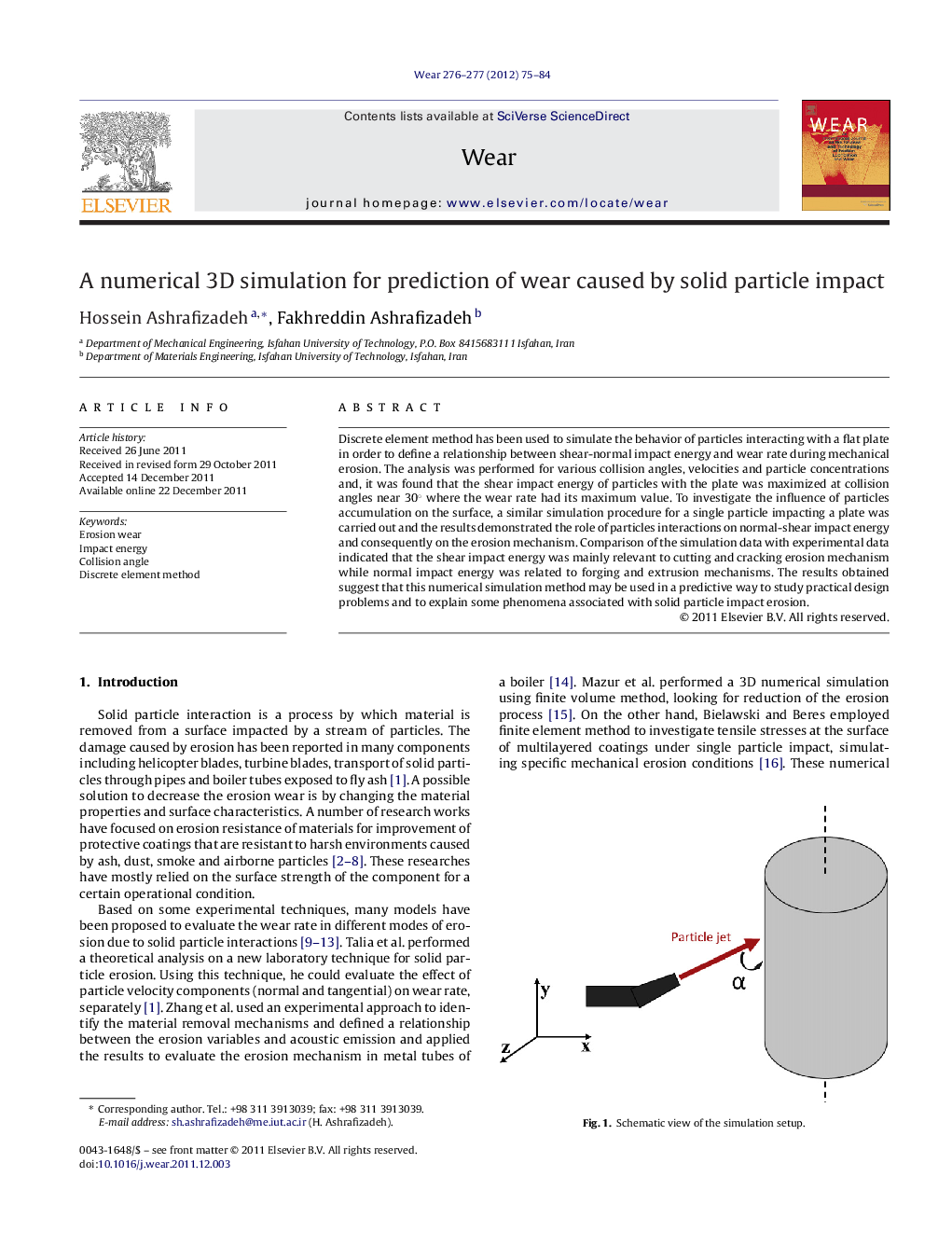| Article ID | Journal | Published Year | Pages | File Type |
|---|---|---|---|---|
| 617983 | Wear | 2012 | 10 Pages |
Discrete element method has been used to simulate the behavior of particles interacting with a flat plate in order to define a relationship between shear-normal impact energy and wear rate during mechanical erosion. The analysis was performed for various collision angles, velocities and particle concentrations and, it was found that the shear impact energy of particles with the plate was maximized at collision angles near 30° where the wear rate had its maximum value. To investigate the influence of particles accumulation on the surface, a similar simulation procedure for a single particle impacting a plate was carried out and the results demonstrated the role of particles interactions on normal-shear impact energy and consequently on the erosion mechanism. Comparison of the simulation data with experimental data indicated that the shear impact energy was mainly relevant to cutting and cracking erosion mechanism while normal impact energy was related to forging and extrusion mechanisms. The results obtained suggest that this numerical simulation method may be used in a predictive way to study practical design problems and to explain some phenomena associated with solid particle impact erosion.
► Discrete element method was introduced as a reliable method for predicting wear rate and erosion mechanism in problems associated with solid particle interactions. ► In our research, the behavior of a single particle impacting a plate was compared with that of a group of particles under the same conditions and the influence of particle interactions on normal and shear impact energies are described. ► In this article, the results of simulation were used to explain the variation of shear impact energy and, therefore, the wear rate at collision angles 80–90° which had not been discussed in previous publications.
